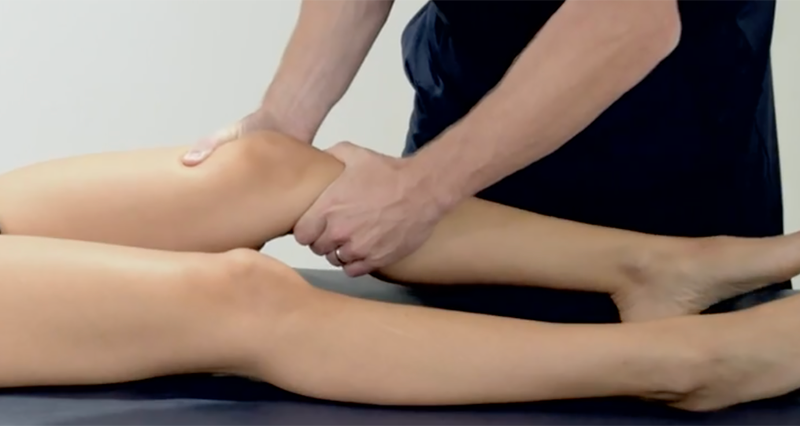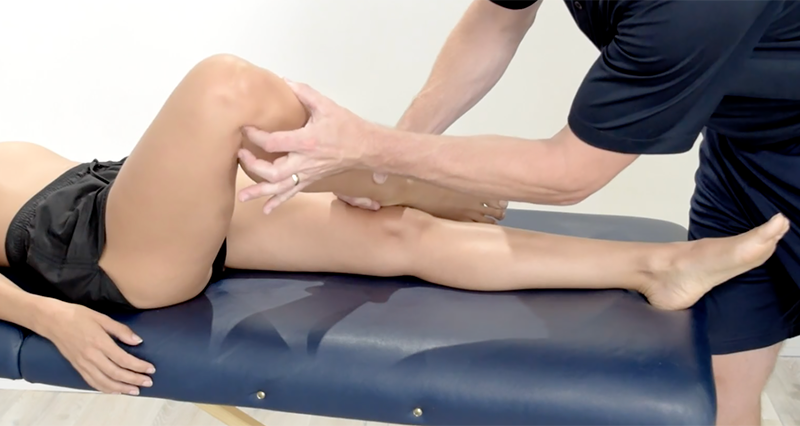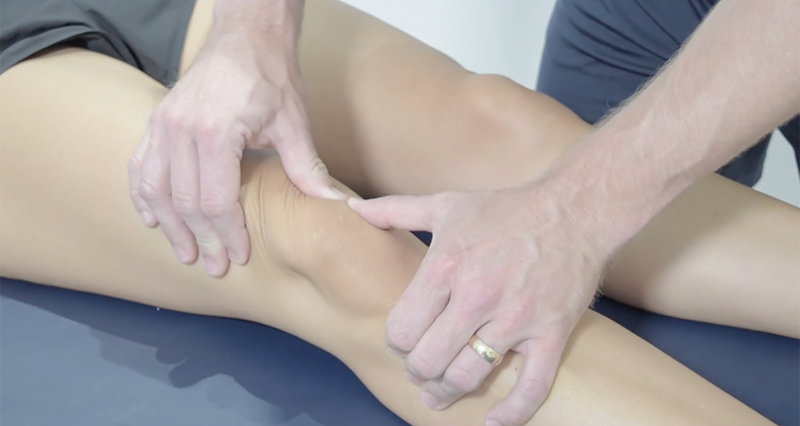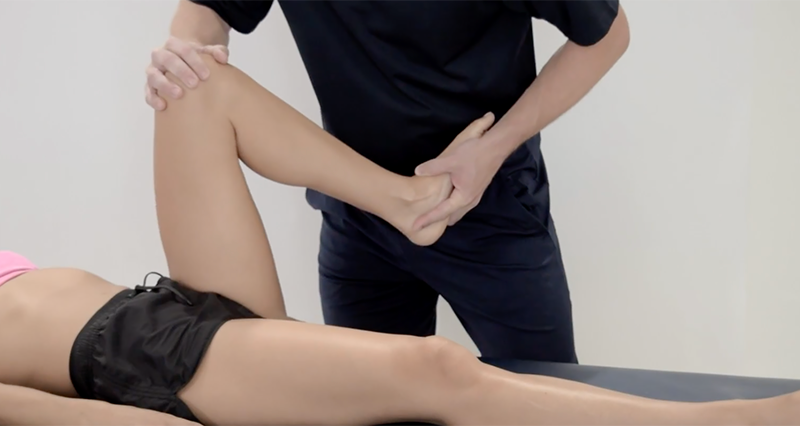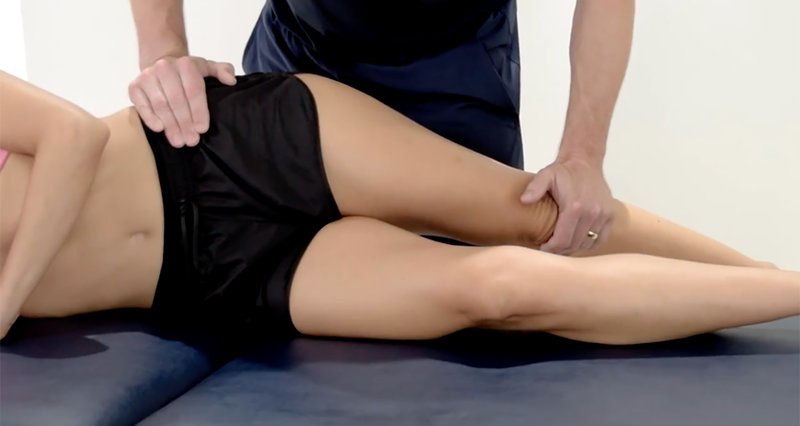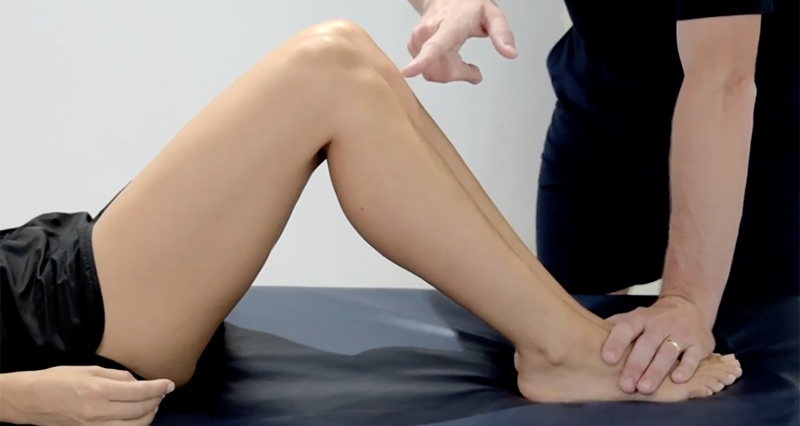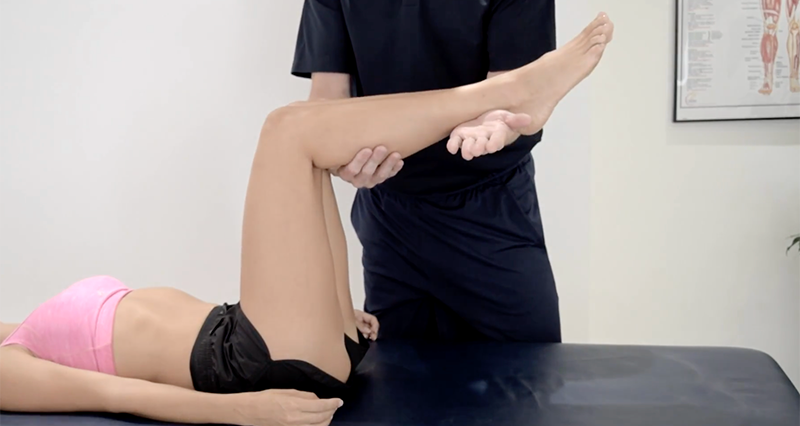The patella tap test assesses excessive fluid within the knee joint. This test should be performed on both legs to judge comparison.
How the patella tap test is performed:
Lie the patient on their back with their legs out straight.
Stand on one side of the patient and place one hand above the knee to stabilize the thigh, while the other hand is used to gently push downward on the patella.
With the hand placed on the patella, apply gentle pressure to compress the soft tissues around the patella against the femur, displacing any fluid present within the knee joint.
While performing the tap, observe for any palpable or visible movement of fluid within the knee joint. If there is a significant amount of fluid present, the patella may feel as if it is floating or bouncing (ballottement) as it is pushed downward.
Check for any discomfort or pain during the test, particularly if there is significant fluid accumulation within the joint.
Assess the presence and extent of knee effusion based on the observations and patient feedback. For example, a palpable or visible fluid wave suggests the accumulation of fluid within the knee joint. Therefore, indicative of various conditions such as knee injury, arthritis, infection, or inflammation.
The patella tap test is a simple and quick bedside examination technique that can provide valuable information about the presence of knee effusion. However, it is often used in conjunction with other clinical tests and diagnostic imaging techniques such as ultrasound or MRI to confirm the diagnosis and identify the underlying cause of the fluid accumulation. Additionally, it’s important for the examiner to perform the test gently and to communicate effectively with the patient to ensure their comfort and cooperation throughout the procedure.
